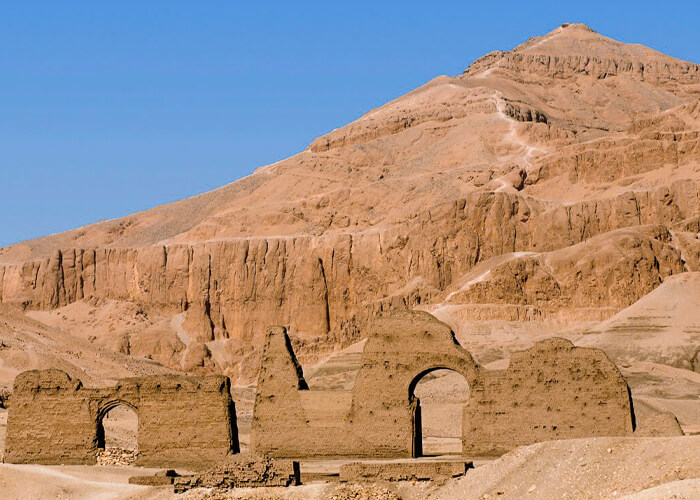Don’t miss the Asasif Tombs if you go to Luxor.
On the West Bank of Luxor, the Asasif Tombs are right across the street from the Temple of Hatshepsut.
The tombs were built for nobles during the 25th and 26th Dynasties when the Nubian Kings ruled the country. They are rarely open to the public because not many people want to see them.
Even though their original structures are gone, there are still some beautiful reliefs and paintings to be found.
Here are locations where you might find them:
Upper Egypt’s Luxor is only an hour’s flight from Cairo, or you can take the overnight sleeper train from Cairo (which takes roughly ten hours).
From Hurghada, you can either fly there in 30 minutes or drive for 2 hours (about 4 hours).
From Aswan, there are two ways to get to Luxor: by car, which takes three hours, or on a cruise down the Nile, which takes a few days.
Here is a short overview of the history of :
This site is in the USA, which is a great country.
On this site, which is between Deir el-Bahri and the Tombs of the Nobles, excavations are still going on. People think there are still a lot of tombs to be found.
Recently, several tombs have been dug up. These include the tombs of Kheru-Ef, Montuemhet, Anch-Hor, and Pabasa.
Research and historical records show that these tombs were used to bury people during the 18th, 25th, and 26th dynasties.
Amenhotep III built a gallery that leads to Kheruef’s tomb, which may lead to the tomb itself.
In each of the two courts below, you can find a passageway that leads to Kheruef’s tomb and an apartment belowground.
During this time, Nubian and Tanis kings were in charge of Egypt.
This Temple used to be one of the biggest in Thebes, but most of it has been destroyed.
If you have the chance, this shrine is a great place to visit.
Egypt was ruled by Pharaoh Seti 1 in the 13th century BCE. His son, Ramses II, who is known in history and scholarship as the “Great Builder,” finished all the work.
The pylons were made of mud-brick, a material that didn’t last long and was often washed away by the Nile’s floodwaters.
Also gone is the line of sphinxes that led to the building’s interior.
The history of the South Asasif Necropolis has taught us a lot, such as how the tombs were built and how they were decorated, as well as what pottery and animal bones were found during excavations.


